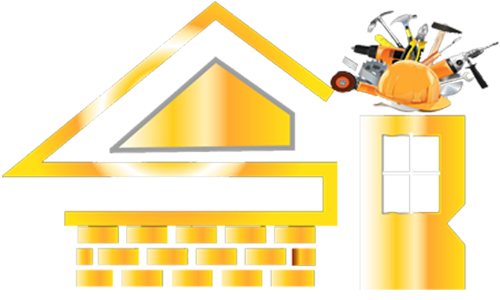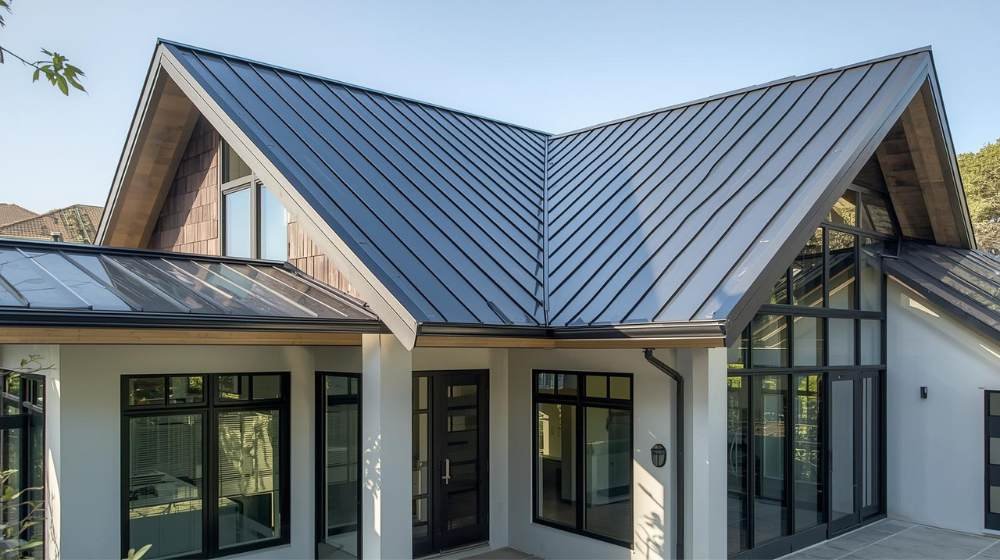
Do you know what a metal roof is and why it’s becoming so popular for homes and businesses in Brooklyn? Let’s break it down. A metal roof is a roofing system made from metal panels or shingles, designed to protect your building from the elements. It’s known for its durability, long life, and energy efficiency.
Now, why should you choose a metal roof for your Brooklyn home or business? Simply put, metal roofs are built to last. They can handle extreme weather, from heavy snow in winter to intense summer heat. Plus, they’re fire-resistant and need little maintenance. This makes them a smart investment in the long run.
A metal roof gives you peace of mind, whether you want to protect your home or business. It will keep your property safe, energy-efficient, and looking wonderful for decades. Let’s look more closely at all you need to know about this type of roof.
Advantages and Limitations of Metal Roofing
When it comes to roofing, metal offers many benefits but also some challenges. It’s important to weigh both the advantages and limitations before deciding if a metal roof is the right choice for your home or business.
Advantages of Metal Roofing
- Long Lifespan: Metal roofs can last 40 to 70 years. Metal roofs don’t need to be replaced as often as other types of roofs. They last for decades in tough conditions, so you won’t have to buy new ones as often.
- Weather Resistance: They handle extreme weather with ease. Metal roofs perform well in heavy rain, snow, and high winds. They can also resist hail damage, which makes them a great choice for places with bad weather.
- Energy Efficiency: Metal roofs reflect heat and light. They reduce cooling costs in the summer by reflecting sunlight. This helps keep your home or business cooler and cuts down on air conditioning use.
- Fire Resistance: Metal is non-combustible. Metal roofs will not catch fire, which adds an extra layer of protection to your building. This feature is especially important for homes in fire-prone areas.
- Low Maintenance: Metal roofs require very little upkeep. They resist rust, mold, and mildew. You don’t need to worry about regular repairs or replacing damaged sections, unlike traditional roofs.
- Eco-Friendly: Metal roofs are recyclable. They can be recycled when they are no longer needed, which cuts down on trash in landfills. Many metal roofs are made from recycled materials, making them a sustainable option.
Limitations of Metal Roofing
- Higher Initial Cost: Metal roofs can be more expensive at first. While they last longer, the upfront cost of a metal roof is higher than traditional options like asphalt shingles. This could be a drawback for homeowners with tight budgets.
- Noise: Metal roofs can be loud during heavy rain or hail. During a storm, the sound of rain or hail hitting a metal roof can be much louder than on other materials. Adding insulation can help, but you should think about it.
- Denting: Soft metals like aluminum may dent. Although durable, softer metals are prone to dents from falling debris or hail. Steel options are less likely to dent but can still be affected by heavy impact.
- Expansion and Contraction: Metal expands and contracts with temperature changes. Metal panels shift with temperature changes, which may cause warping or cracking if not installed correctly. This factor needs to be considered when choosing your material and installation method.
- Specialized Installation: Installation requires expert skills. Installing a metal roof is more complex than traditional roofing. It’s important to hire a professional to ensure proper installation and avoid future issues.

Metal Roof Components, Accessories, and Parts
A metal roof is made up of several essential components, accessories, and parts. Each part plays a specific role in protecting your building and maintaining the roof’s performance. Let’s break down the different parts and accessories of a metal roof.
Components of Metal Roofing
These are the core elements that make up the metal roof structure.
- Roof Panels: The main coverage material, typically made of steel, aluminum, or copper. They are designed to shield your building from the weather.
- Underlayment: This layer goes under the panels to ensure extra protection against water leaks. It also helps with insulation and temperature control.
- Flashing: Installed at joints and edges to direct water away from vulnerable spots. It prevents water from seeping under the roof panels.
- Fasteners: Screws, bolts, and clips that hold the panels securely in place. They are essential to keep the roof from shifting or getting damaged.
- Ridge Caps: Placed at the peak of the roof to seal the joint where two slopes meet. They prevent water from entering at the highest point of the roof.
Accessories for Metal Roofing
These accessories enhance the functionality and look of a metal roof.
- Gutters and Downspouts: Gutters and downspouts are installed to move rainwater away from the roof and foundation. Proper drainage helps prevent water damage.
- Ventilation Systems: This system ensures proper airflow in the upper space or building. They help prevent heat buildup and moisture accumulation.
- Snow Guards: They help prevent snow and ice from sliding off the roof. They are important for areas with heavy snowfall.
- Chimney Caps: Chimney caps are installed around chimneys to protect them from rain and scraps. They help prevent water damage and allow for safe ventilation.
- Gable Vents: Gable vents are placed at the ends of the roof, which allow air to circulate. They help maintain airflow and control moisture.
Parts of a Metal Roof
These are the individual components that make up the roofing system.
- Eave Trim: Eave trim is installed at the edge of the roof, which covers the junction between the roof and the wall. It keeps water from getting into the building.
- Sidewall Flashing: It goes where the roof meets a vertical wall. It keeps water from running between the roof and the wall.
- Valley Flashing: It is installed where two roof slopes meet to form a valley. It directs water safely down to the gutters.
- End Caps: End caps are placed at the end of the roof panels to provide a finished look. They protect the ends of the panels from exposure to the elements.
- Sealants: Sealants help to fill gaps around fasteners or edges. It provides extra waterproofing to prevent leaks.
Metal Roofing Panel Styles
There are different styles of metal roofing panels to choose from; each style offers unique benefits and visual appeal.
- Corrugated Panels: These panels have a wavy, ribbed design. They are durable and commonly used for agricultural and industrial buildings.
- Standing Seam Panels: A modern design where the panels interlock at seams. They provide a sleek, uniform look and are popular for residential and commercial buildings.
- Metal Shingles: Metal shingles look like traditional shingles but are made from metal. They combine the styles of shingles with the durability of metal.
- Metal Tiles: These panels look like clay or slate tiles, but they are made of metal, which has its own benefits. They are lightweight and energy-efficient.
- Exposed Fastener Panels: These panels are fastened directly to the roof deck, and the fasteners are visible. They are cost-effective and simple to install but less durable than other options.
Standing Seam Profile Options
Standing seam panels come in different profile options, which allows for flexibility in design and function.
- Snap-Lock Standing Seam: These panels lock together without the need for clips or fasteners. They create a clean, seamless look that’s easy to install.
- Mechanical Seam Panels: These require mechanical tools to lock the seams together. This option provides strong resistance against high winds.
- Double Lock Standing Seam: A more secure version of the mechanical seam. It offers extra protection from leaks and is ideal for commercial buildings.
- Batten Panel System: This profile uses vertical battens to cover the seams between panels. It provides a more traditional appearance and is great for residential homes.
- Flat-Lock Panels: A standing seam system with flat seams. These panels are used for architectural projects and require skilled installation.
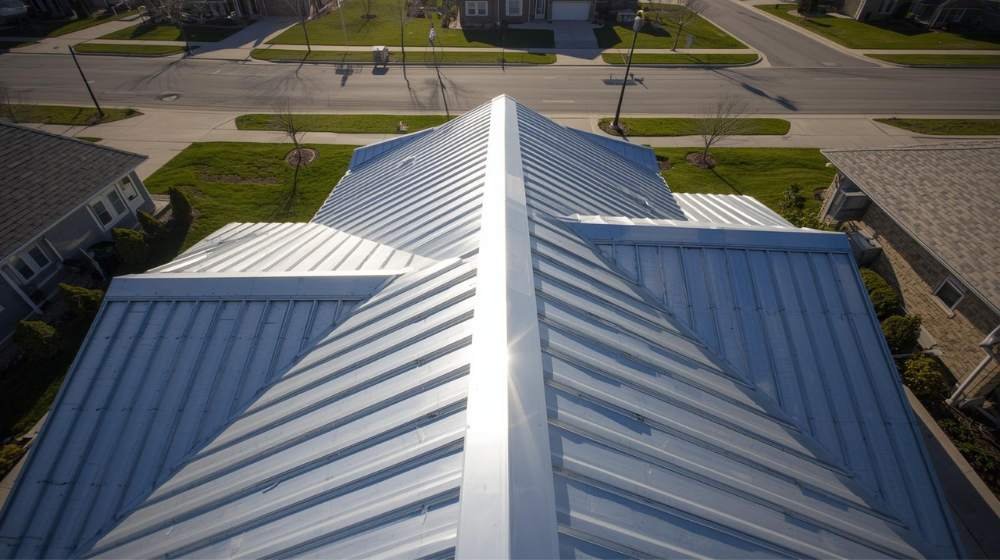
Metal Paint Colors and Finishes
Metal roofing comes in various colors and finishes to match different design preferences and environmental needs.
- Polyester Coating: Polyester coating is a cost-effective finish that offers excellent color variety. It works well for residential roofs in mild climates.
- Kynar 500® Finish: The material is known for its durability and resistance to fading. This finish is ideal for areas with harsh weather conditions.
- Galvalume® Finish: This is a metallic finish that provides corrosion resistance. It’s often used for industrial or agricultural buildings.
- Anodized Finish: This finish provides a sleek, shiny look. It’s perfect for modern architectural styles.
- Textured Finishes: These finishes mimic the appearance of traditional materials like wood or stone. They add visual interest and are perfect for homes with rustic designs.
Common Metal Thicknesses
Different metal thicknesses are used for various applications, each offering distinct benefits.
- 24-Gauge: One of the thickest options, commonly used for commercial and industrial applications. It provides excellent durability and resistance to damage.
- 26-Gauge: A standard thickness for residential roofs. It’s a beneficial balance of strength and cost.
- 28-Gauge: A lighter metal often used for agricultural buildings or warehouses. It’s easier to work with but may be more prone to dents.
- 30-Gauge: A thin option used for roofs with minimal load requirements. It’s suitable for buildings in mild climates but may not hold up in harsh weather.
- 32-Gauge: The thinnest metal used in roofing, typically used for budget-conscious applications. It’s not as durable, but is an affordable option for non-residential buildings.
Panel Rib Rollers (Striations)
Panel rib rollers, also known as striations, are tools used in metal roofing. They create ribs or grooves along the panels to add strength and prevent warping. These ribs help the roof shed rain and snow by making it easier for water to drain. Striations also provide a visual texture, which gives the roof a distinctive, patterned look.
Types of Metal Roofs
A metal roof is a durable and reliable option for homes and businesses. There are several types of metal roofs, each with different features, materials, and benefits. Here are five common types of metal roofs:
- Steel Roofs: Steel is the most common material for metal roofs. It is affordable, strong, and resistant to many types of weather.
- Aluminum Roofs: Aluminum is lightweight and highly resistant to rust and corrosion, which makes it ideal for coastal regions. It’s also an energy-efficient material, reflecting more heat than other types.
- Copper Roofs: Copper roofs are long-lasting and develop a unique green patina over time. They are often chosen for their outlook and durability in extreme weather.
- Zinc Roofs: Zinc roofs are known for their self-healing properties. The material forms a protective patina over time, which helps prevent corrosion and extends the roof’s lifespan.
- Tin Roofs: Tin roofs are typically made from steel sheets coated with tin. They are cost-effective and lightweight, though they are less durable than other metal roof types.
How to Install a Metal Roof
A metal roof installation is a step-by-step process that requires careful attention to detail. Here’s how you can install a metal roof:
- Prepare the Roof Deck: Clean the roof deck and make sure it’s smooth and level. Any existing materials or scraps should be removed to ensure proper installation.
- Install the Underlayment: Lay a waterproof underlayment across the entire roof deck. This helps prevent water from penetrating and provides extra insulation.
- Place the Flashing: Install flashing around the edges, chimneys, and vents. Flashing seals the seams and prevents water from leaking into these areas.
- Cut and Fit the Panels: Measure and cut metal panels to fit the size of your roof. Be sure to leave room for expansion and contraction caused by temperature changes.
- Install the Panels: Starting at one end of the roof, place the first panel and secure it with screws or clips. Continue adding panels in rows. It ensures the seams interlock securely.
- Seal the Seams: After securing all panels, apply a sealant to the seams. This adds an extra layer of protection to keep water from getting underneath the panels.
- Add Ridge Caps and Trim: Finally, install ridge caps at the peak of the roof and trim along the edges. These elements provide a clean finish and protect the roof’s edges from the elements.
How Much Does a Metal Roof Cost?
The cost of a metal roof varies depending on the type of material, the size of the roof, and the complexity of the installation. On average, the cost per square foot ranges from $5 to $15.
- Material Costs: The material cost depends on the type of metal you choose. Steel and aluminum are more affordable, while copper and zinc are more expensive.
- Labor Costs: Labor costs vary by region but generally range from $2 to $6 per square foot.
- Repair Costs: Repair costs depend on the damage and materials needed, but minor repairs can cost around $5 to $10 per square foot.
Installation Cost (per sq. ft.)
Here’s an estimate of the installation cost for different types of metal roofs:
| Metal Roof Type | Material Cost (per sq. ft.) | Labour Cost (per sq. ft.) | Total Cost (per sq. ft.) |
| Steel Roof | $2 – $4 | $3 – $5 | $5 – $9 |
| Aluminum Roof | $3 – $5 | $3 – $6 | $6 – $11 |
| Copper Roof | $10 – $15 | $4 – $7 | $14 – $22 |
| Zinc Roof | $7 – $10 | $4 – $6 | $11 – $16 |
| Tin Roof | $1.50 – $3 | $2 – $4 | $3.50 – $7 |
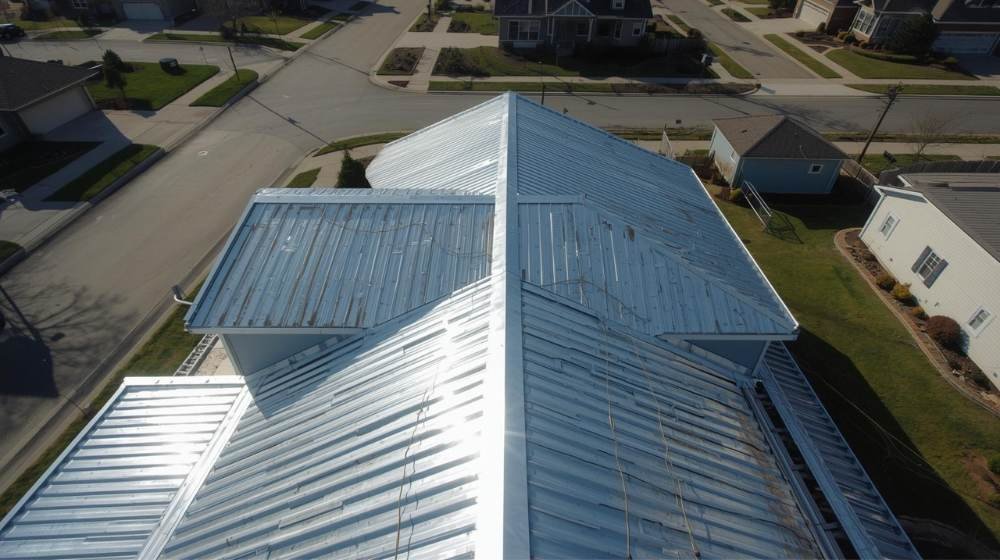
Repair Cost (per sq. ft.)
Repair costs vary depending on the type of damage and the materials required for the job. Here’s a detailed estimate of repair costs:
| Repair Type | Material Cost (per sq. ft.) | Labour Cost (per sq. ft.) | Total Cost (per sq. ft.) |
| Minor Leak Repair | $1 – $2 | $3 – $5 | $4 – $7 |
| Panel Replacement | $3 – $5 | $4 – $6 | $7 – $11 |
| Flashing Repair | $1 – $3 | $3 – $5 | $4 – $8 |
| Fastener Replacement | $0.50 – $1 | $2 – $3 | $2.50 – $4 |
| Complete Reseal | $2 – $3 | $3 – $5 | $5 – $8 |
Common Uses and Applications for Metal Roofing
Metal roofing is used in various types of buildings, which offer both aesthetic and functional benefits. It is popular for commercial buildings, residential projects, and architectural designs due to its strength and long lifespan. Metal roofs are also widely used in agricultural structures where durability and cost-effectiveness are essential.
Commercial Buildings
In commercial buildings, metal roofing is often used for its durability and ability to resist harsh weather conditions. Materials like steel and aluminum are commonly used, which offer excellent resistance to corrosion and extreme weather. These roofs are often designed with standing seam panels, which provide a sleek, modern look while offering minimal maintenance. The energy efficiency of metal roofs also helps reduce cooling costs in large commercial spaces.
Residential Projects
Metal roofing is becoming a popular choice for residential homes due to its longevity and appearance. Homeowners often choose materials like aluminum or steel, which are both durable and energy-efficient. Metal roofs offer various styles, including standing seam and metal shingles, which can mimic traditional roofing materials like asphalt or wood. They also provide superior weather resistance and require minimal maintenance over time.
Architectural Projects
In architectural projects, metal roofing is often used for its design versatility and long-term durability. Materials like copper and zinc are chosen for their attractive design, as they develop a unique patina over time. These roofs can be designed in custom shapes and profiles, which adds a modern and stylish touch to buildings. The durability and low maintenance of metal roofing make it a practical choice for architects seeking both beauty and function.
Structural Uses
For structural uses, metal roofing is chosen for its strength and ability to handle heavy loads. Steel is the most common material used, as it offers high tensile strength and durability. Metal roofs in these applications are often used on warehouses, factories, and large industrial buildings. The design of metal roofs allows for large spans without the need for internal supports, which provides more usable space within the building.
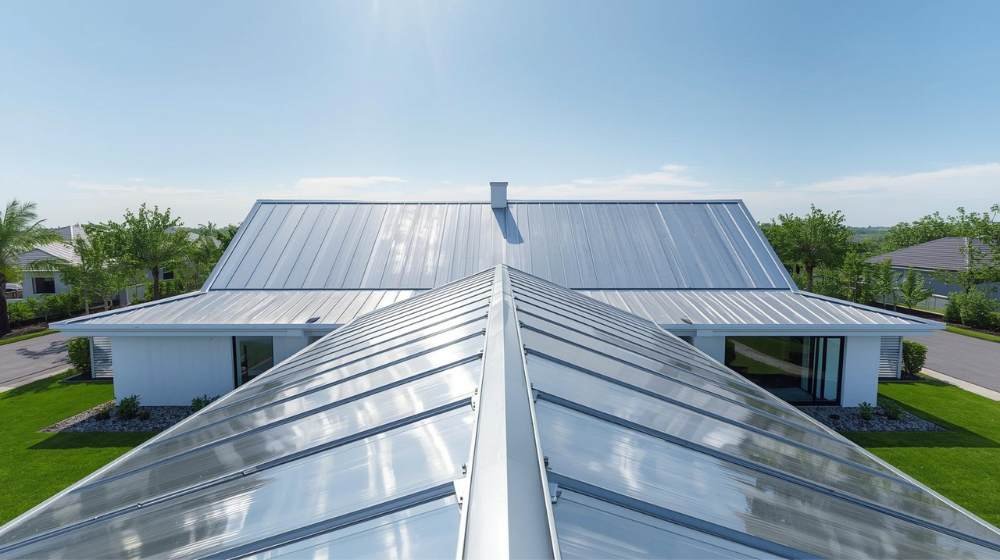
Agricultural Buildings
In agricultural buildings, metal roofing is ideal due to its affordability and ability to resist harsh weather conditions. Steel and galvanized metal are commonly used for barns, silos, and other agricultural structures. These roofs provide excellent protection from rain, snow, and extreme heat. These features ensure the safety of crops and livestock. Metal roofing in agricultural buildings also helps to keep maintenance expenses low while offering long-lasting protection.
Comparison of Metal Roofs with Other Roofs
Metal roofs offer many advantages over traditional roofing types. To help you understand the differences, here’s a comparison of metal roofs with other common roofing materials. We’ll look at six important factors to help you decide which roofing option suits your needs best.
| Factor | Metal Roof | Asphalt Shingles | Wood Shingles | Clay/Terracotta Tiles | Slate Roof | Rubber Roof |
| Durability | 40-70 years | 15-20 years | 25-30 years | 50-100 years | 75-100 years | 30-50 years |
| Weather Resistance | Excellent (water, wind, snow) | Good (susceptible to wind and hail) | Moderate (vulnerable to rot) | Excellent (waterproof) | Excellent (fire, weather-resistant) | Moderate (susceptible to UV damage) |
| Maintenance | Low | High (requires frequent repairs) | High (requires maintenance to prevent rot) | Low (rare maintenance needed) | Very Low (requires little upkeep) | Moderate (needs occasional repairs) |
| Cost | $5–$15 per sq. ft. | $3–$5 per sq. ft. | $5–$7 per sq. ft. | $10–$15 per sq. ft. | $15–$25 per sq. ft. | $4–$7 per sq. ft. |
| Energy Efficiency | High (reflects heat) | Low (absorbs heat) | Low (wood absorbs heat) | Moderate (insulates well) | Moderate (good insulation) | High (insulates well) |
| Environmental Impact | Eco-friendly (recyclable) | High (non-recyclable waste) | Moderate (biodegradable but requires resources) | Eco-friendly (natural material) | Eco-friendly (natural material) | Moderate (depends on production) |
How Long Do Metal Roofs Last?
Metal roofs are known for their durability and long lifespan. They can last anywhere from 40 to 70 years with proper maintenance. In some cases, they can even exceed 100 years, especially with materials like copper or zinc.
Expert Tips for Metal Roof Maintenance
To keep your metal roof in excellent condition, here are six expert tips:
- Inspect your roof regularly for damage or trash buildup.
- Clean gutters and downspouts to ensure proper drainage.
- Check for loose fasteners and tighten them as needed.
- Look for signs of rust or corrosion and treat them quickly.
- Apply a protective coating every few years to extend the roof’s life.
- Ensure proper ventilation to reduce moisture buildup underneath the roof.
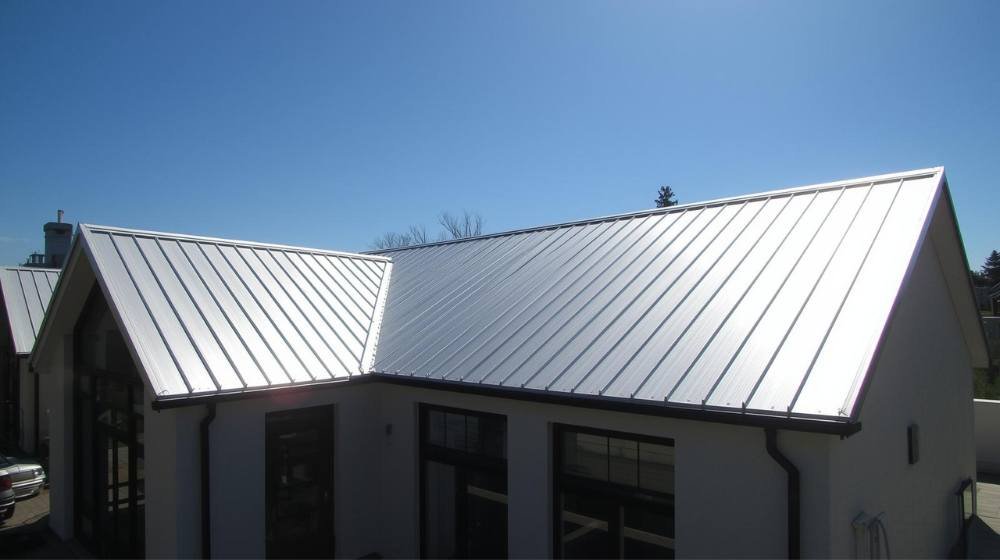
Where to Choose a Professional Roofing Contractor?
Are you looking for an expert roofing contractor in Brooklyn, NYC? SR General Construction has you covered! Our business is located at 8807 Avenue B, Brooklyn, NY 11236, United States, in the Canarsie area.
We proudly serve all areas of Brooklyn with high-quality, durable roofing solutions. From new installations to repairs and maintenance, we provide the best service at affordable prices. Contact us and experience why we’re Brooklyn’s roofing experts!
FAQ
1. What is a metal roof?
A metal roof is a roofing system made from metal panels or shingles. It is durable, long-lasting, and energy-efficient, and is often used for residential, commercial, and agricultural buildings.
2. Why should I choose a metal roof for my home?
Metal roofs are known for their durability and ability to withstand extreme weather. They can last much longer than traditional roofs. It will save your money in the long run.
3. How long do metal roofs last?
Metal roofs can last between 40 and 70 years. It depends on the material and proper maintenance.
4. Are metal roofs energy-efficient?
Yes, metal roofs reflect sunlight, which helps reduce cooling costs in hot climates. They keep your home cooler by reflecting more heat than traditional roofing materials.
5. What is the cost of a metal roof?
The cost of a metal roof typically ranges from $5 to $15 per square foot. It depends on the material and installation complexity.
